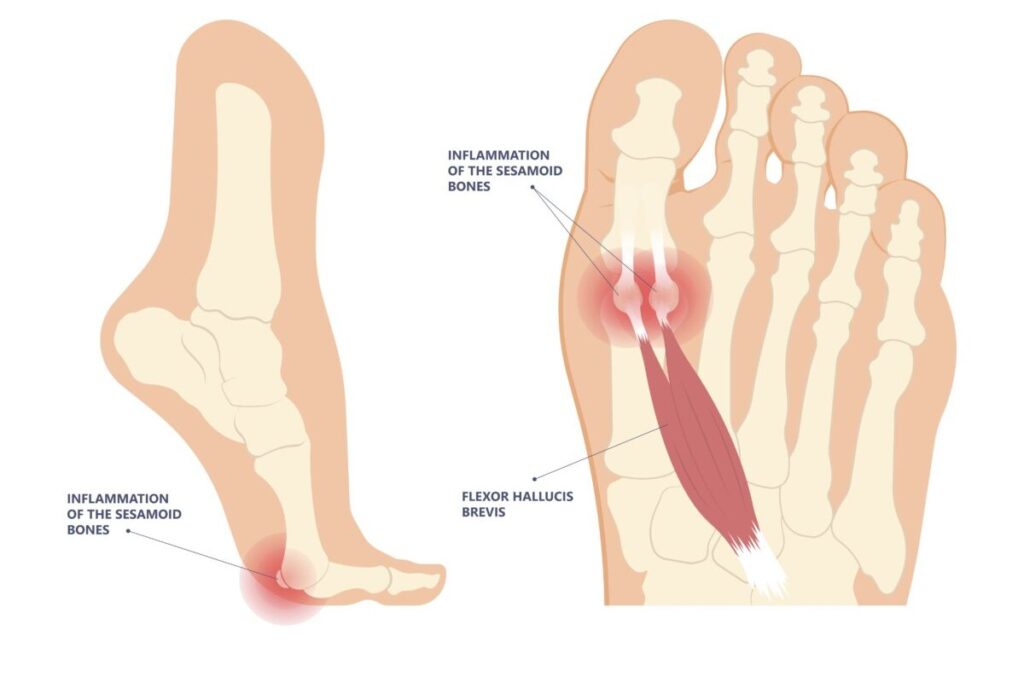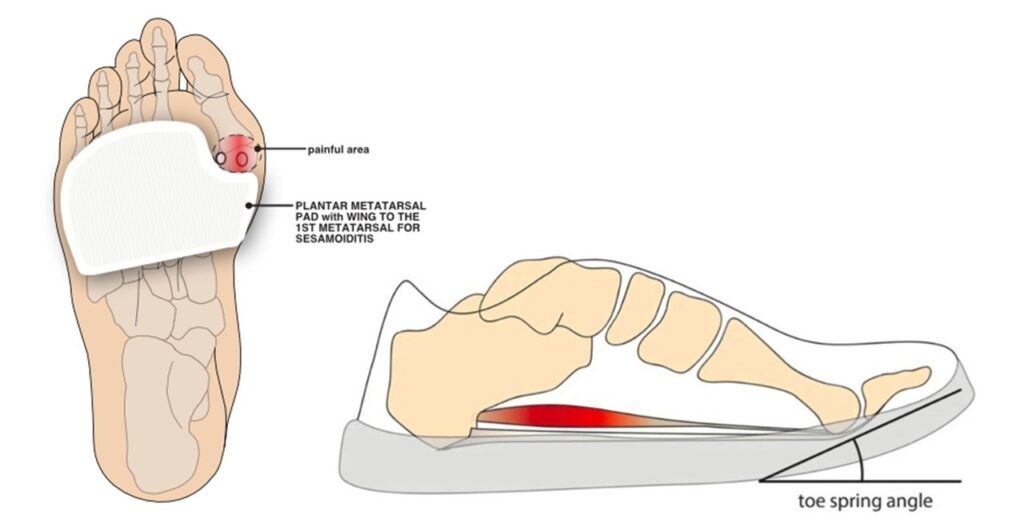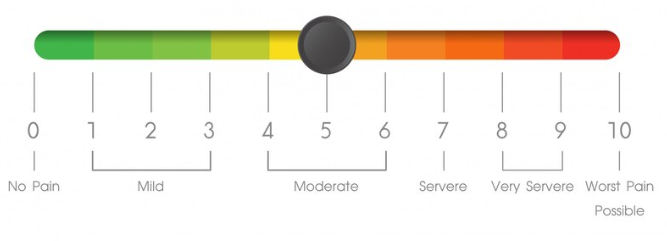Pain in your big toe – sesamoiditis
Pain in your big toe – sesamoiditis
What is sesamoiditis?
Sesamoiditis is an inflammation under the big toe in the ball of the foot which is common amongst young active people, runners, dancers and people whose occupations require them to stand all day.
The sesamoid bones are two small bones underneath your big toe joint that act as a pivot for the tendons that bend your big toe. When there is inflammation, pain is felt under the big toe joint – it can come and go but causes great discomfort especially when walking.

Signs and symptoms of sesamoiditis
You may experience any or all of these symptoms:
- pain underneath your big toe when walking, especially when your big toe bends
- pain on weight bearing activity and easing with non-weight bearing activity
- pain if pressure is applied directly on the area
- swelling.
What causes sesamoiditis?
In most cases sesamoiditis develops as a result of sudden changes in activity, or how often and how much load is being placed through the big toe joint. The injury causes mild foot aches at first but if left untreated, the aches develop into more severe pain. Contributary factors include:
- sudden increase in weight
- wearing unsupportive footwear such as shoes or sandals
- impact/ trauma – tired/ overused feet
- repeated loading from sports
- sudden increased activity such as starting a new job or leisure activity
- sudden bending of your big toe
- regular walking wearing high heels
- osteoarthritis
- osteoporosis
- large sesamoid bones
- high arched or flat feet.
What can I do to relieve the pain of sesamoiditis?
Unfortunately there is no quick or easy fix and your symptoms will not improve overnight. Making simple changes to your lifestyle and footwear choices as well as reducing aggravating activities can help improve your sesamoiditis pain. Only you can do this.
Things to try:
-
- rest and raise your foot on a stool when you can
- place an ice pack (or bag of frozen peas) in a towel on the painful area for up to 20 minutes every two to three hours
- wear shoes with cushioned heels and good arch support
- use insoles in your footwear
- try regular stretching and foot exercises
- try exercises which put no pressure on your feet, such as swimming
- try to lose weight if you’re overweight or obese.
Things to avoid:
- walking or standing for long periods
- wearing high heels and tight pointy shoes
- wearing flip-flops or backless slippers
- walking barefoot on hard surfaces.
What shoes should I wear if I have sesamoiditis?
If high heels or other shoes are causing an increase in your discomfort, you should avoid these and opt for something more supportive and comfortable. Soft, cushioned, lower heeled shoes with a stiff toe spring should help to reduce the bending of your big toe which can help to reduce your symptoms.
Shoes that have flexible soles generally offer the foot less support and can increase the stress in soft tissues within your foot. If you have shoelaces make sure they are tied appropriately. Avoid wearing hard, flat or unsupportive shoes.
Padding
To help cushion and offload the sesamoids, a pad can be placed into your shoe or directly on the foot. The padding is usually made of semi-compressed felt.
Find out more on our footwear advice page including how to check if shoes fit.

Ankle, foot and toe rehabilitation exercises
The video exercises shown below will help to improve your pain over a period of time. Watch the video first, then try the exercise. There are six videos to try – go through to the next one below by clicking the arrow on the right of the video. All videos provided and shared with kind permission of, and thanks to, the Musculoskeletal Podiatry team at NHS Lanarkshire.
You need the use of a clear space of wall, a small towel, a small plastic bottle of water, a sports resistance band and a sports therapy ball. If you do not have a sports resistance band or sports therapy ball (also known as a soft spiked massage ball) these can be purchased relatively inexpensively online. If cost is an issue, focus on the exercises which do not use that equipment.
Important – pain levels: the NHS uses a pain scale where pain is measured from 0-10 (zero being no pain and 10 representing the worst pain you could imagine).

If you can identify the level of pain you are experiencing, you will find out if you are in the green, amber or red zone.
When you are completing your rehabilitation exercises it is often best to work within the green (and sometimes amber zones depending on what you deem is an acceptable level of pain) both during the exercises and within 48 hours of completing your exercises.
The best way to move down to the green zone is by pacing and spacing your activity. If you find yourself in the red zone you are likely pushing yourself too hard and the pain may flare up.
If you notice a large increase in your pain after doing the exercises, or you find that after six to twelve weeks there is no noticeable changes in your day to day symptoms, then please contact your GP or self-refer to our MSK podiatry team.